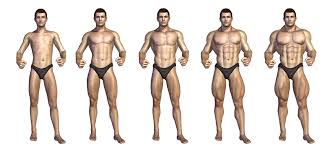The 3 Energy systems.
1) Anaerobic ATC-CP System
The type of sports for Anaerobic systems is
* Cycling
* Rowing
* Long distance running
* Punching a boxing bag as hard as you possibly can.
The ATP-CP system is an energy source for exercising. The system provides an immediate breakthrough of stored energy. if this energy is fully loaded it will provide a maximum intensity, it provides you with the most energy out of all the energy systems. If the exercise gets very intense and the ATC-CP system does not produce enough energy throughout the exercise it will rely on other energy systems to produce the energy for our bodies so that we do not run out of energy during exercising this is the only negative thing about the ATC-CP system as it can run out quickly and can take a few minutes to reboot (depending on the intensity of the exercise)
What does ATP-CP stand for?
2) Anaerobic Lactic Acid System
1) Anaerobic ATC-CP System
The type of sports for Anaerobic systems is
* Cycling
* Rowing
* Long distance running
* Punching a boxing bag as hard as you possibly can.
The ATP-CP system is an energy source for exercising. The system provides an immediate breakthrough of stored energy. if this energy is fully loaded it will provide a maximum intensity, it provides you with the most energy out of all the energy systems. If the exercise gets very intense and the ATC-CP system does not produce enough energy throughout the exercise it will rely on other energy systems to produce the energy for our bodies so that we do not run out of energy during exercising this is the only negative thing about the ATC-CP system as it can run out quickly and can take a few minutes to reboot (depending on the intensity of the exercise)
What does ATP-CP stand for?
ATP stands for Adenosine triphosphate (it is a form of energy)
CP stands for : Charge Parity
Anaerobic systems do not need oxygen
The energy source comes from food... Protein, Carbohydrates and Fats.
2) Anaerobic Lactic Acid System
Once the ATP-CP system has run out of energy, the lactic acid provides the energy. The lactic acid system is broken when the ATP-CP energy is used. The breaking down of the lactic acid system is called glycolysis.
3) Aerobic capacity
The maximum amount of O2 in ml an athlete can use in one minute/kg of body weight. There are three distinctive types of training, continuous training, fartlek training repetition training. Training can increase up to 20% of VO2 max.
3) Aerobic capacity
The maximum amount of O2 in ml an athlete can use in one minute/kg of body weight. There are three distinctive types of training, continuous training, fartlek training repetition training. Training can increase up to 20% of VO2 max.
Anaerobic
|
Aerobic
|
|
Oxygen
|
No
|
Yes
|
Intensity
|
80-100% (max)
|
50-80%
|
Duration
|
About 20 seconds
|
Hours!
|
Activities
|
Long jump / high jump / javelin / 100m sprint / sprint
swimmers / hockey
|
Distant swimmers / marathon
|




























